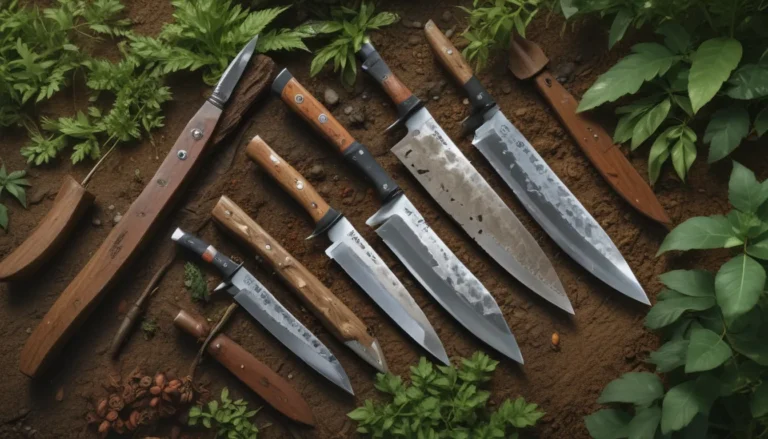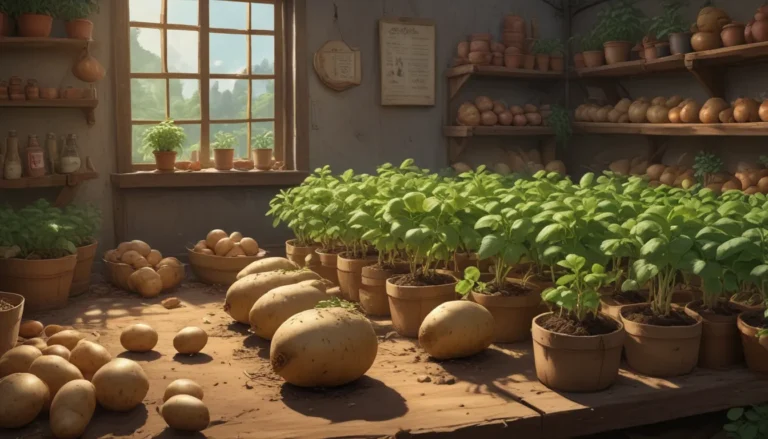The Ultimate Guide to Growing and Caring for Borage Plants

If you are looking for a versatile herb with a rich history and a plethora of garden uses, look no further than Borago officinalis, commonly known as borage or starflower. This Mediterranean herb belongs to the Boraginaceae family and is known for its vibrant blue star-shaped blossoms and fuzzy leaves.
In this comprehensive guide, we will cover everything you need to know about cultivating borage, from its cultivation and history to propagation, growing tips, and harvest. Whether you want to grow this herb for its ornamental beauty, culinary uses, or as a cover crop, we’ve got you covered.
The Fascinating History of Borage
Borage, believed to have originated in Syria, has a long and storied history dating back to ancient times. Its leaves and flowers have been used in the eastern Mediterranean region for culinary and medicinal purposes, with applications ranging from garnishing drinks to addressing respiratory issues and adrenal problems.
The seeds of borage contain an oil rich in gamma linoleic acid (GLA), a fatty acid prized for its anti-inflammatory properties. It is important to note that while borage is packed with health benefits, it also contains low concentrations of unsaturated pyrrolizidine alkaloids that can be potentially harmful to the liver. As with any herbal supplement, it is essential to consult a healthcare professional before consumption.
Cultivating Borage Plants
Borage is an annual herb that behaves like a perennial, self-sowing seeds to ensure its future growth. To cultivate borage successfully, provide it with a location that receives full sun to part shade and well-draining soil. The plant can reach up to three feet tall and 18 inches wide at maturity.
Propagation is best done from seeds, which have a high germination rate. You can either directly sow seeds outdoors after the last frost date or start them indoors and transplant seedlings to the garden.
How to Grow Borage Plants
For optimal growth, provide borage with full sun exposure and well-draining soil. Amend the soil with organic matter like compost or leaf mulch to improve drainage and enhance soil fertility. Remember to maintain even moisture during germination and establishment but let the soil dry out between waterings once the plant is established.
Borage can also thrive in containers, provided the pot is at least 12 inches wide and deep and filled with a well-draining potting medium. Be mindful of watering frequency in containers, as they tend to dry out faster than ground soil.
Growing Tips:
- Plant in full sun for abundant blooms.
- Average soil is suitable, as long as it drains well.
- Amend the soil with compost, leaf mulch, or builder’s sand for optimal growth.
Borage Cultivars to Select
When selecting borage seeds, you may come across blue botanical species like B. officinalis or cultivated varieties in blue and white. Popular options include:
- B. officinalis (blue)
- B. officinalis ‘Alba’ (white)
These cultivars offer a variety of colors to suit your garden aesthetic.
Managing Pests and Disease
Borage is not prone to significant pest or disease issues. In fact, it attracts beneficial insects that feed on common garden pests, making it an excellent companion plant. However, in less than ideal conditions, fungal infections such as leaf spot and powdery mildew may occur.
To prevent fungal infections, ensure proper spacing between plants for adequate air circulation and avoid overwatering. In case of an outbreak, remove affected foliage and apply a food-safe fungicide as needed.
Harvesting Borage Plants
Harvest borage leaves and flowers when they are fresh for optimal flavor and aroma. Use the leaves in salads, soups, or as garnishes, and freeze the flowers in ice cubes for a decorative touch in drinks. You can also candy the flowers for cake embellishments or collect seeds for future sowing.
Remember to handle borage with care, as the fuzzy texture may cause skin irritation, and some individuals may experience adverse reactions to consumption.
Best Garden Uses
In addition to its culinary and medicinal uses, borage is a versatile herb that can be used in various garden applications. Planting borage between other crops can help ward off common pests, making it an excellent companion plant for vegetables like tomatoes, squash, and strawberries. Additionally, sowing borage as a cover crop can prevent erosion, retain moisture, and inhibit weed growth in fallow land.
With its ability to attract beneficial pollinators and add a pop of color to the garden, borage is a charming addition to any landscape. Consider sowing borage in a sunny meadow or as a border plant to create a vibrant habitat for bees, butterflies, and other insects.
Quick Reference Growing Guide:
- Plant Type: Self-seeding annual herb
- Flower / Foliage Color: Blue, white / gray-green
- Native to: Syria, eastern Mediterranean
- Hardiness (USDA Zone): 2-11
- Tolerance: Deer, drought, rabbits
- Exposure: Full sun to part shade
- Spacing: 9-18 inches
- Height: 1-3 feet
- Spread: 9-18 inches
- Water Needs: Low to moderate
- Maintenance: Low
- Common Pests: Snails and slugs
- Common Disease: Leaf spot, powdery mildew, root rot, stem rot
In Conclusion
Borage is a versatile herb that offers beauty, flavor, and functionality in the garden. Whether you grow it for its culinary uses, medicinal properties, or as a beneficial companion plant, borage is a valuable addition to any garden. With proper care and attention, you can enjoy the vibrant blooms and aromatic foliage of this Mediterranean herb year after year.
Are you ready to welcome borage into your garden? Share your thoughts and experiences in the comments below. And if you’re a fan of growing herbs, be sure to check out our other guides on spearmint, oregano, and marjoram for more gardening inspiration.
*





